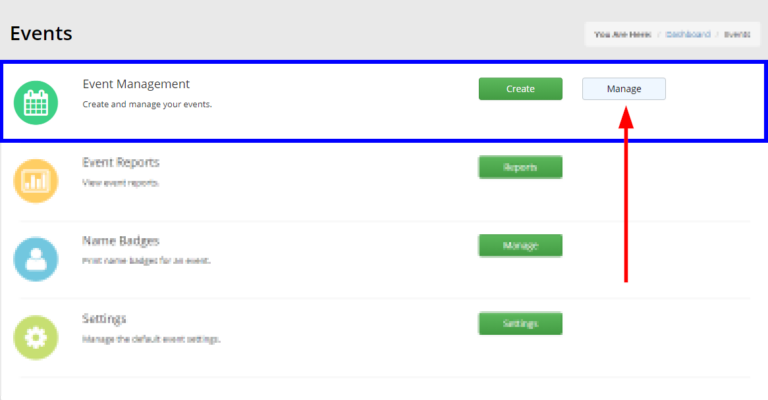Are you looking to streamline the event registration process and boost attendance for your upcoming event? Mastering the art of creating a registration link is the key to achieving this goal. In today’s digital age, knowing how to create a registration link for an event is a valuable skill that can make a significant difference in the success of your event. From conferences and webinars to workshops and networking events, a well-crafted registration link can simplify the registration process for your attendees, leading to higher participation rates and smoother event organization.
Introduction: Understanding the Importance of Registration Links
Registration links play a crucial role in the success of any event, whether it’s a conference, webinar, workshop, or any other gathering. These links serve as the gateway for participants to sign up and engage with the event’s content, speakers, and activities. Understanding the significance of registration links is essential for event organizers to maximize attendance and create a seamless registration process.
The Role of Registration Links
Registration links act as the direct connection between event organizers and potential attendees. They provide a simple and convenient way for participants to express their interest in the event and reserve their spot. Additionally, registration links enable organizers to gather essential information about attendees, such as their contact details, preferences, and any special requirements.
Utilizing registration links effectively can help streamline the registration process, track attendee numbers, and communicate important event details, ensuring a smooth and successful event experience for both organizers and participants.
The Importance of User-Friendly Registration Links
Creating user-friendly registration links is crucial for encouraging maximum participation in an event. A well-designed registration link should be easy to find, clearly labeled, and straightforward to use. It should guide participants through the registration process step by step, minimizing any potential confusion or barriers to signing up.
By optimizing the design and functionality of registration links, event organizers can enhance the overall user experience, increase registration conversions, and ultimately boost attendance rates for their events.

Identifying Your Event Registration Platform
When it comes to creating a registration link for your event, one of the crucial steps is choosing the right event registration platform. With various options available in the market, it’s essential to identify the platform that best suits your needs and requirements.
Key Considerations for Choosing an Event Registration Platform
Before selecting a platform, consider factors such as user-friendliness, customization options, payment processing capabilities, attendee management features, and integration possibilities.
- User-Friendliness: Ensure the platform is easy to navigate for both you as the event organizer and your attendees.
- Customization Options: Look for platforms that allow you to customize registration forms and confirmation emails to align with your event branding.
- Payment Processing Capabilities: Choose a platform that supports various payment gateways and offers secure payment processing.
- Attendee Management Features: Opt for a platform that provides functionalities for tracking attendee data, managing registrations, and sending updates.
- Integration Possibilities: Consider platforms that integrate with other tools you use, such as marketing automation software or CRM systems.
Researching and Comparing Event Registration Platforms
Take time to research and compare different event registration platforms available in the market. Read reviews, request demos, and analyze pricing structures and features to make an informed decision.
Consider platforms like Eventbrite, Cvent, RegFox, and others, which offer a range of features catering to different event types and sizes. Look for platforms that provide responsive customer support in case you encounter any issues during the registration process.

Step 1: Accessing the Event Registration Portal
When you are ready to create a registration link for your event, the first step is to access the event registration portal. This portal is where you will set up all the necessary details for your event registration process.
Logging In
Start by visiting the event management platform where your event is hosted. Log in to your account using your credentials. Once logged in, navigate to the event dashboard.
Check for the ‘Registration’ or ‘Tickets’ tab on the dashboard. This is where you will find options to create the registration link.
Creating a New Registration Link
Look for the option to create a new registration link. Click on this option to initiate the process.
Fill in the essential details such as event name, date, time, and any other specific information required. Ensure that the registration link is easily accessible and reflects the purpose of your event.
Step 2: Setting Up a New Event Registration Form
After creating the registration link, the next step is to set up a new event registration form to collect attendee information efficiently. Ensure the form is user-friendly and captures all necessary details.
Customize Registration Form Fields
Customize the form fields based on the event requirements. Include fields such as name, email address, contact number, and any specific questions related to the event.
You can also add custom fields for special requests or dietary restrictions.
Design the Registration Form
Design the form layout to make it visually appealing and easy to navigate. Use a clear call-to-action button to encourage registrations.
- Choose a color scheme that aligns with your event theme.
- Ensure the form is mobile-responsive for seamless registration on all devices.
Step 3: Generating the Registration Link
After setting up the event details and registration process, the next crucial step is to generate the registration link that participants will use to sign up for the event.
Using Event Registration Platforms
To create a seamless registration process, consider utilizing event registration platforms such as Eventbrite or Cvent. These platforms offer tools to easily generate custom registration links for your event.
Customizing the Registration Link
To make your registration link more appealing and user-friendly, customize it to reflect your event’s branding. Include the event name, date, and any special offers in the link for better engagement.
Sharing the Registration Link
Once you have generated the registration link, share it across all your event promotional channels, including social media, email newsletters, and your event website. Make it easily accessible to maximize registrations.
Customizing and Sharing the Registration Link
When it comes to how to create a registration link for an event, customization and sharing play a crucial role in boosting registration numbers. Providing a personalized registration experience can make attendees feel special and more inclined to sign up. Here’s a step-by-step guide on customizing and sharing your registration link:
Step 1: Customize the Registration Page
To make your registration link more appealing, customize the registration page with your event branding, including the logo, color scheme, and event details. A visually attractive registration page can create a positive impression on potential attendees.
Step 2: Create a Compelling Call-to-Action
Include a strong call-to-action (CTA) on your registration link to encourage visitors to register. Use engaging language such as “Register Now” or “Secure Your Spot” to prompt action. A well-crafted CTA can significantly impact click-through rates.
Step 3: Share on Multiple Platforms
Maximize the exposure of your registration link by sharing it across various platforms. Utilize social media channels, email newsletters, event websites, and online communities to reach a wider audience. The more visibility your link gets, the higher the chances of conversions.
Tracking Registration Data and Analytics
When planning an event, tracking registration data and analytics is crucial to understanding the success of your event promotion strategies. By monitoring registration data and analyzing the metrics, you can make data-driven decisions to optimize your event marketing efforts.
Importance of Tracking Registration Data
Tracking registration data provides valuable insights into attendee demographics, registration sources, and registration trends. Understanding where your registrants are coming from can help you target your marketing efforts effectively.
By analyzing registration data, you can identify which promotional channels are driving the most registrations, allowing you to allocate resources efficiently and focus on high-performing channels.
Utilizing Analytics Tools
There are various analytics tools available that can help you track and analyze registration data effectively. Tools like Google Analytics can provide detailed information about website traffic, conversion rates, and user behavior, allowing you to optimize your registration process.
By setting up event tracking in Google Analytics, you can track specific actions such as registration form submissions, button clicks, and page views related to registration, giving you valuable insights into user interactions.
Best Practices for Registration Link Optimization
When optimizing a registration link for an event, there are several best practices to keep in mind to ensure maximum visibility and conversion. These practices are essential for driving traffic and increasing sign-ups for your event.
1. Use a Clear Call-to-Action
Make sure your registration link has a clear and compelling call-to-action (CTA) that tells users exactly what to do. Utilize action words like “Register Now” or “Sign Up” to prompt immediate action. Engage users with a sense of urgency by highlighting limited availability or early bird discounts.
2. Optimize Link Placement
Strategically place your registration link on prominent pages of your event website to ensure visibility. Consider placing the link in the header, footer, and within the content of relevant pages. Utilize eye-catching buttons or banners to attract attention.
3. Implement Tracking Parameters
Include tracking parameters in your registration link to monitor the performance of your marketing efforts. Use tools like Google Analytics to track conversions and user behavior. Measure the effectiveness of various marketing channels to refine your strategies.
Frequently Asked Questions
-
- What is a registration link for an event?
- A registration link for an event is a unique URL that allows guests or participants to sign up for the event online.
-
- Why is creating a registration link important for events?
- Creating a registration link is important for events as it streamlines the registration process, helps in tracking attendees, and enables organizers to gather necessary information about the participants.
-
- How can I create a registration link for my event?
- To create a registration link for your event, you can use event management platforms or registration tools that offer the option to generate custom registration links. Alternatively, you can create a unique registration page on your event website.
-
- What are the essential steps for creating a registration link for an event?
- The essential steps for creating a registration link for an event include choosing a registration platform, customizing the registration form, setting up ticket types (if applicable), adding event details, and generating the unique registration link.
-
- Can I track the registration progress using the registration link?
- Yes, most event management platforms and registration tools provide analytics and reporting features that allow you to track the registration progress, monitor ticket sales, and gather insights about the attendees.
Final Thoughts: Mastering Event Registration Links
In summary, creating a registration link for your event is a crucial step towards ensuring a successful turnout. By following the step-by-step guide outlined in this blog, you can master this art and streamline the registration process for your attendees.
Remember to customize your link, utilize a reliable registration platform, and promote it effectively to reach your target audience. A well-crafted registration link can make all the difference in boosting registrations and attendee engagement.
So, put these tips into practice, experiment with different strategies, and track the performance of your registration link to continuously improve and optimize your event registration process. Here’s to hosting successful and seamless events!



